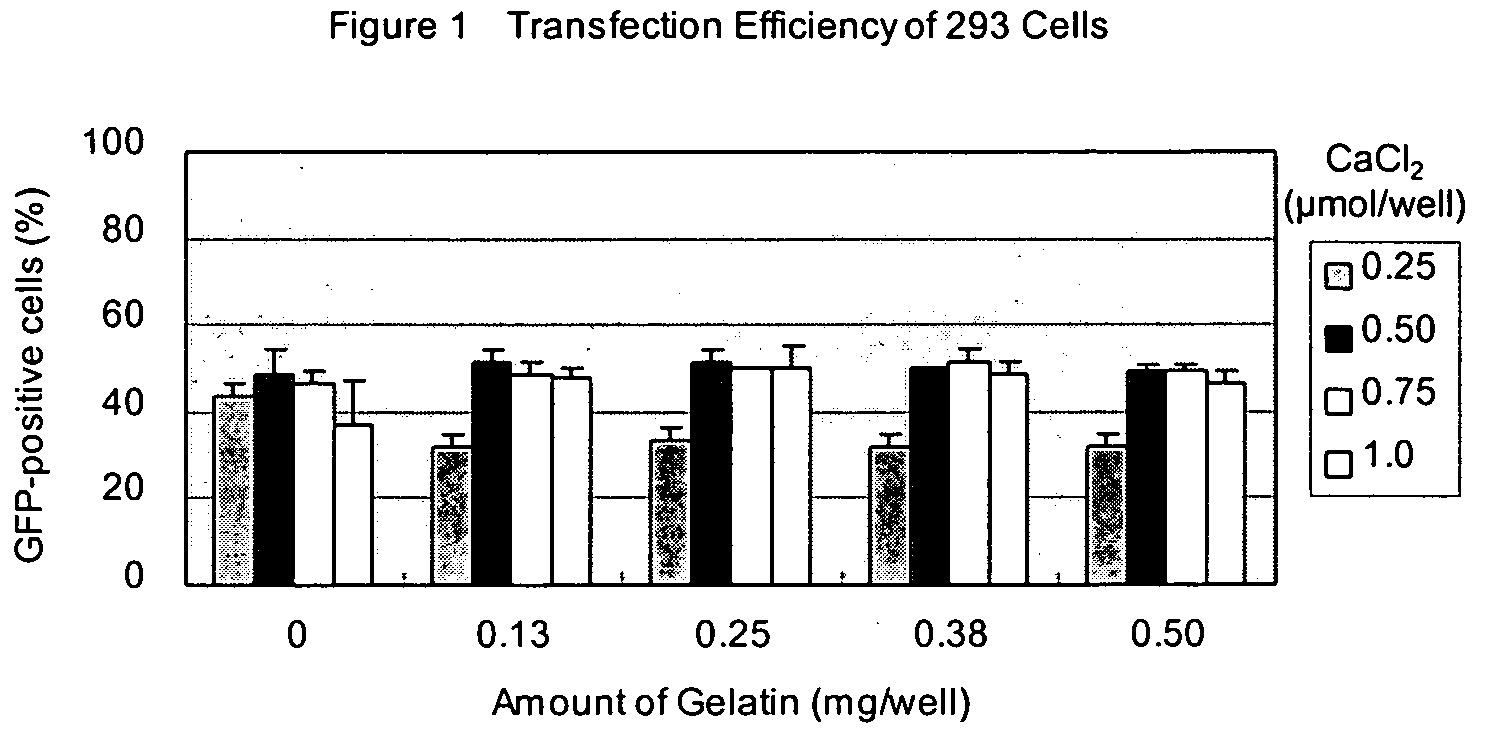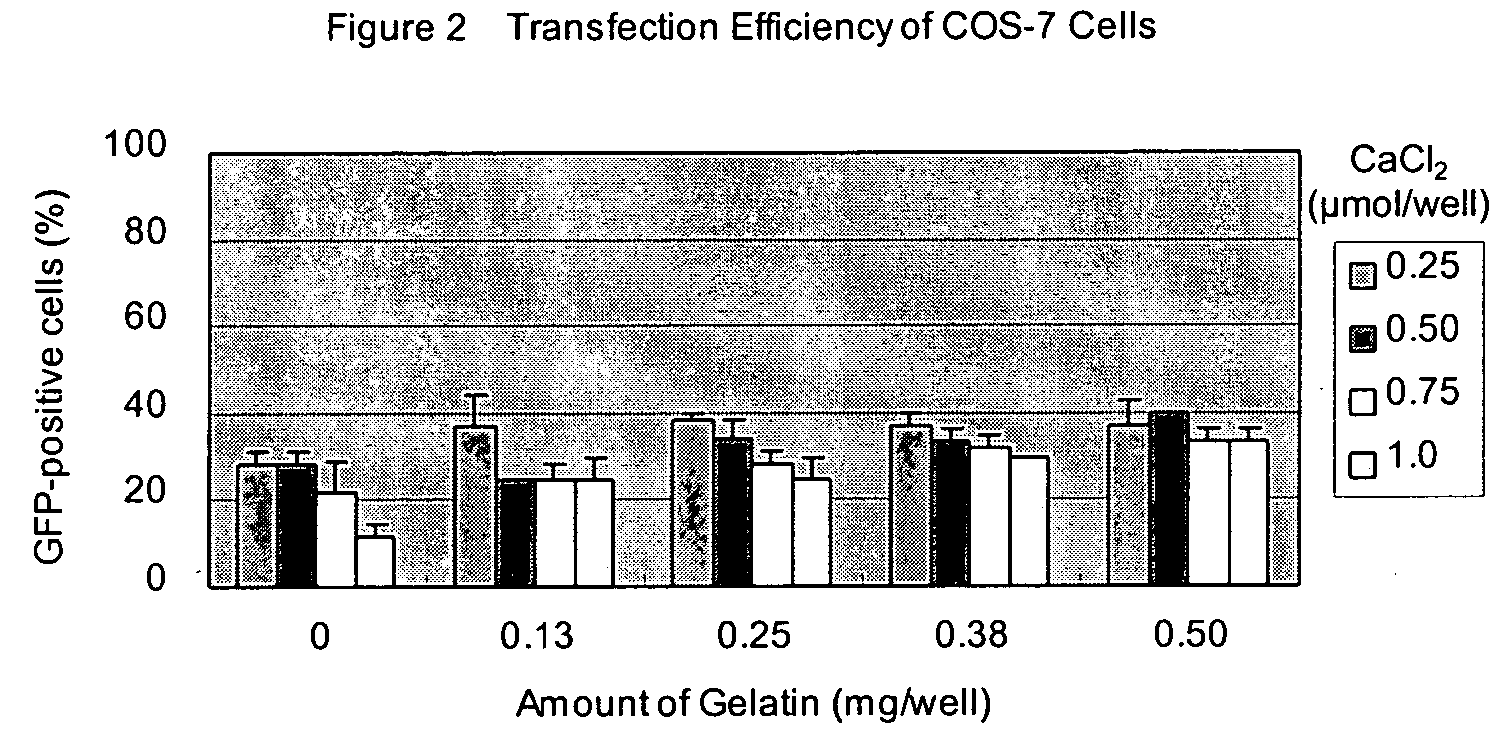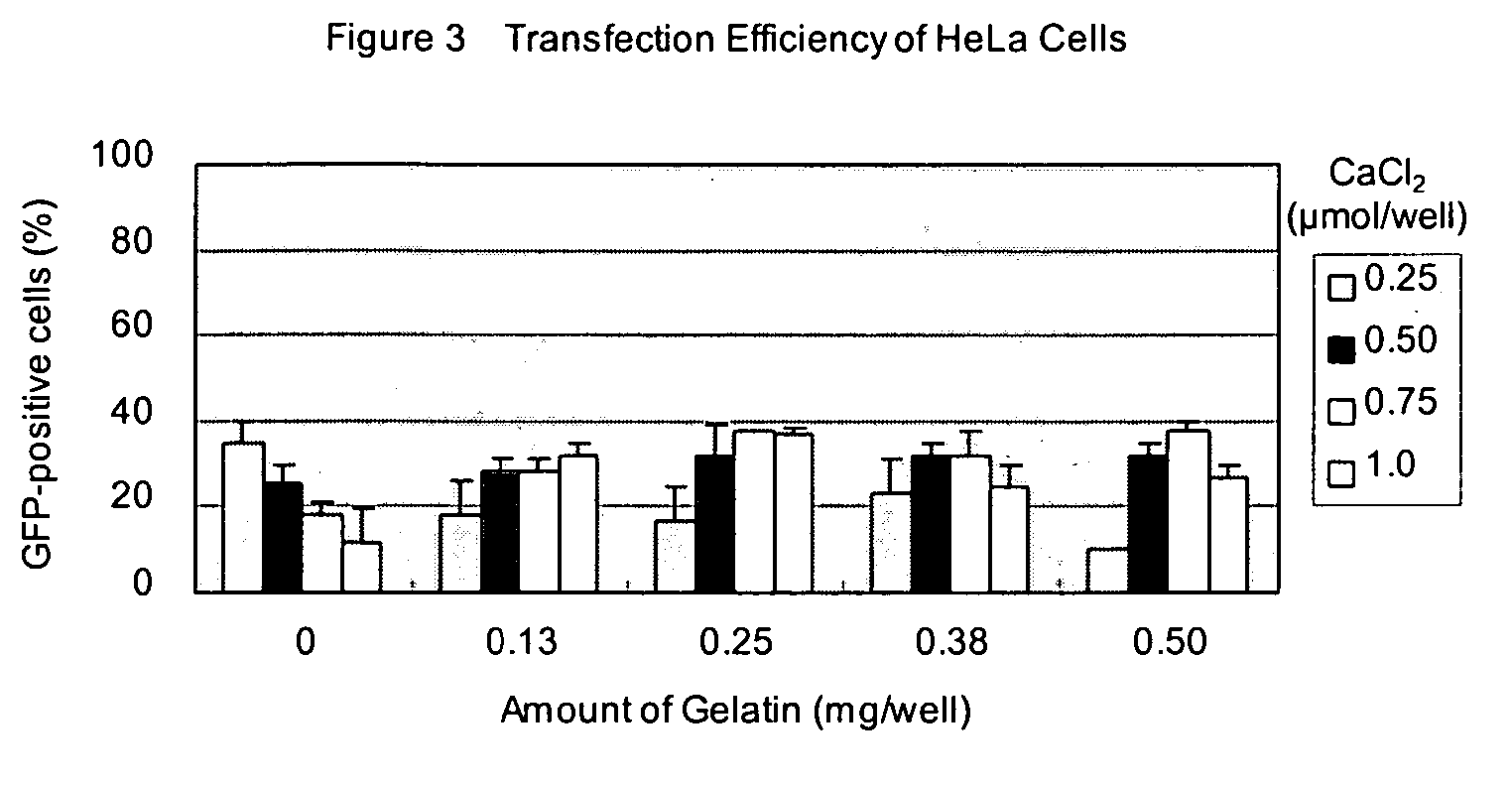Culture device and method for eukaryotic cell transfection
- Summary
- Abstract
- Description
- Claims
- Application Information
AI Technical Summary
Benefits of technology
Problems solved by technology
Method used
Image
Examples
example 1
Preparation of Cell Culture / Transfection Device
[0058] Calcium chloride and linear polyethylene imine (L-PEI) were used for transfecting plasmid DNA into mammalian cells in vitro to evaluate the transfection efficiency. The transfection reagents were affixed on the well bottoms of a 96-well cell culture plate (Coming Costar, Cat. No. 3997) with gelatin (Type B; SIGMA-ALDRICH, Cat. No. G-9391). In the case of calcium chloride, 0.5 μmol / well of calcium chloride was affixed with 0.5 mg / well of gelatin. In the case of PEI, 3.5 μg / well of PEI was affixed with 0.05 mg / well of gelatin. These reagents and gelatin were dissolved in 25 μl of deionized water (per each well) and distributed to the wells. The wells were then air-dried.
example 2
Transfection with Cell Culture / Transfection Device for 293 Cells
[0059] 50 ng of pCMV-GFP plasmid in 25 μl of opti-MEM I (Invitrogen, Cat. No. 31985-070) was added in each well and kept at room temperature for 25 minutes. Next, 5×104 of 293 cells in 100 μl of Dulbecco's modified Eagle Medium (DMEM) (Invitrogen, Cat. No. 11965-084) with 10% calf serum (Invitrogen) were added and incubated at 37° C. in 7.5% CO2. After 24 h incubation, transfection efficiency was estimated by observing GFP fluorescence by using an epifluorescent microscope (IX70, Olympus).
[0060] Transfection efficiencies are shown in Table 1. Both transfection reagents were applicable to the transfection system of this invention and showed very high transfection efficiency.
TABLE 1Transfection Efficiency with Transfectable Cell Culture DeviceTransfection ReagentGFP-positive cellsL-PEI60%CaCl270%
example 3
Conventional Transfection for 293 Cells
[0061] 100 μl of 293 cell culture (5×105 cells / ml in DMEM) was seeded in a 96-well plate and incubated at 37° C. in 7.5% CO2 for 24 h. After the cultivation, pCMV-GFP plasmid-transfection reagent mixture (final concentration: plasmid; 10 ng / μl, transfection reagent; as written in Table 2), dissolved in opti-MEM, was prepared and incubated at room temperature for 15 min to allow forming plasmid-transfection reagent complex. Then, 15 μl of plasmid-transfection reagent complex was added in each well and incubated at 37° C. in 7.5% CO2 for 24 h. Transfection efficiency was estimated as described in Example 2. As a result, L-PEI was effective in conventional method; however, calcium chloride was not suitable. In the conventional method, two incubation steps and a complicated preparation are required.
[0062] As can be seen from Table 2, CaCl2 was not an effective transfection agent when used in a conventional method. L-PEI was an effective agent al...
PUM
| Property | Measurement | Unit |
|---|---|---|
| Composition | aaaaa | aaaaa |
| Density | aaaaa | aaaaa |
| Biodegradability | aaaaa | aaaaa |
Abstract
Description
Claims
Application Information
 Login to View More
Login to View More - R&D Engineer
- R&D Manager
- IP Professional
- Industry Leading Data Capabilities
- Powerful AI technology
- Patent DNA Extraction
Browse by: Latest US Patents, China's latest patents, Technical Efficacy Thesaurus, Application Domain, Technology Topic, Popular Technical Reports.
© 2024 PatSnap. All rights reserved.Legal|Privacy policy|Modern Slavery Act Transparency Statement|Sitemap|About US| Contact US: help@patsnap.com










